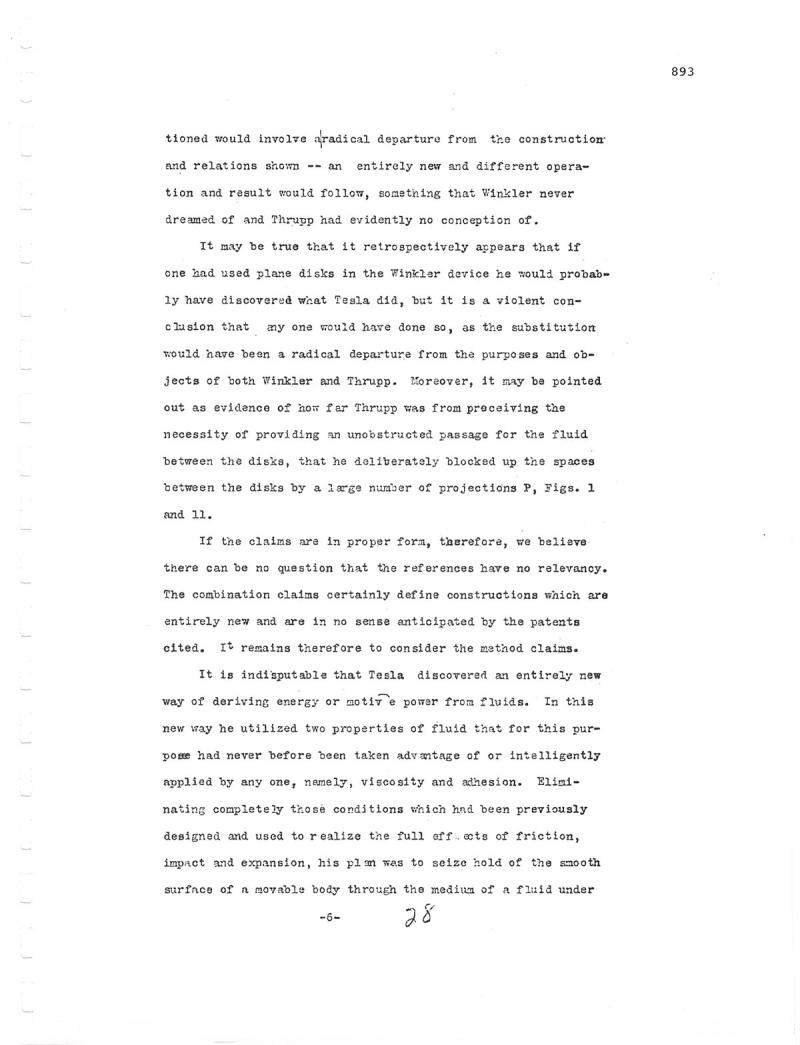
Nikola Tesla Patents
Nikola Tesla U.S. Patent 1,061,206 - Turbine Patent Wrapper Page 29
} tioned would involve aradical departure from the construction and relations shown -- an entirely new and different operation and result would follow, something that Winkler never dreamed of and Thrupp had evidently no conception of. It may be true that it retrospectively appears that if one had used plane disks in the Winkler device he would probably have discovered what Tesla did, but it is a violent conclusion that any one would have done so, as the substitution would have been a radical departure from the purposes and objects of both Winkler and Thrupp. Moreover, it may be pointed out as evidence of how far Thrupp was from preceiving the necessity of providing an unobstructed passage for the fluid between the disks, that he deliberately blocked up the spaces between the disks by a large number of projections P, Figs. 1 and 11. If the claims are in proper form, therefore, we believe there can be no question that the references have no relevancy. The combination claims certainly define constructions which are entirely new and are in no sense anticipated by the patents cited. It remains therefore to consider the method claims. It is indisputable that Tesla discovered an entirely new way of deriving energy or motive power from fluids. In this new way he utilized two properties of fluid that for this purpose had never before been taken advantage of or intelligently applied by any one, namely, viscosity and adhesion. Eliminating completely those conditions which had been previously designed and used to realize the full effects of friction, impact and expansion, his plm was to seize hold of the smooth surface of a movable body through the medium of a fluid under 28 893
